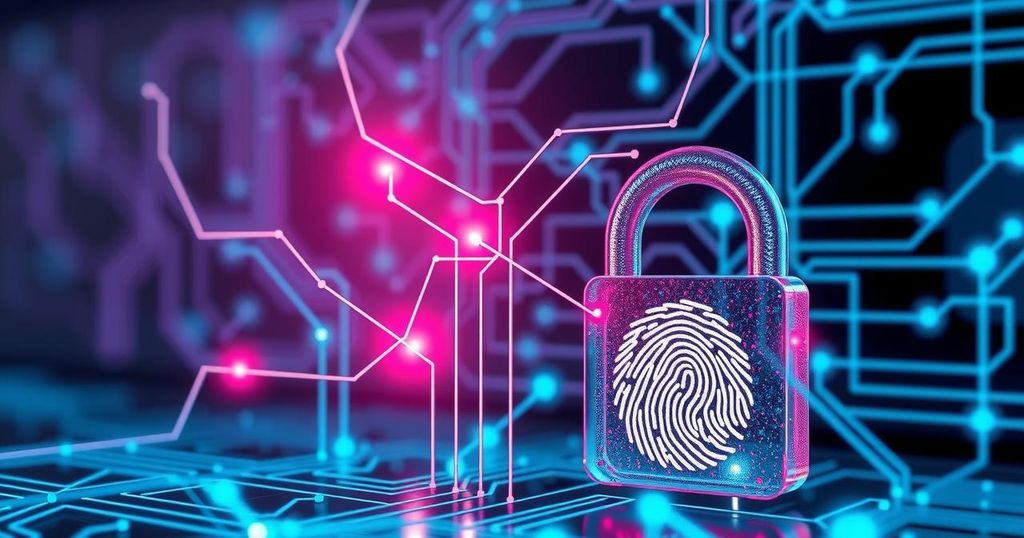The article discusses the integration of biometrics with payment systems, with Mastercard replacing credit card numbers with biometrics and tokenization. Digital wallets are merging identity and payment functionalities, while Visa advocates for passkeys as a security measure. Global responses range from concerns over AI in government to the expansion of Aadhaar in India, signaling a significant shift toward digital identity solutions.
Biometrics are increasingly integrating with payment systems, transforming traditional payment methods such as credit cards into a more secure, identity-based approach. Mastercard is phasing out 16-digit credit card numbers in favor of tokenization and on-device biometrics, combating fraud from data breaches. This rollout begins with AMP Bank in Australia and will continue until 2030.
Digital wallets are making significant progress in merging payment and identity functions, as discussed in recent contributions by Fime and Mattr. The EUDI Wallet Consortium and experts like David Birch highlight Apple Pay as a pioneer, suggesting that Apple IDs could evolve into the predominant use case for digital wallets.
Visa is advocating for the incorporation of passkeys as a secure method for processing payments. Matt Charpentier, Visa’s VP, argues that passkeys, developed by the FIDO Alliance, can replace passwords and enhance the link between biometric identification and payment credentials.
In addition to digital wallets, various authorities are voicing concerns over government measures integrating AI in administration. Controversy surrounds proposals for linking Login.gov to other government databases, which some cite as illegal. Former PM Tony Blair argues for digital identity systems to reduce fraud and improve government efficiency.
In the UK, increasing feedback on the government’s digital wallet plan reveals a slow but ongoing transformation. The usefulness of government-issued IDs compared to private sector alternatives is under scrutiny, especially in light of the Gov.uk Verify system. The DIATF registry has now certified 55 service providers, signaling growing interest and development in this area.
In India, a new framework will permit non-government sectors to use Aadhaar for authentication after proposals are reviewed for public interest adherence. This marks a significant expansion of biometric capabilities into private sectors.
Idemia has contracted with a Canadian police force for facial recognition technology aimed at matching investigative images with mugshots. The contract emphasizes adherence to strict protocols during implementation and follows previous similar agreements.
Atos is facing scrutiny regarding its procurement processes in the EU, especially concerning its Russian office’s involvement in purchasing software for travel registration schemes prior to geopolitical tensions. Investigation focuses on compliance with security clearances.
The ISO/IEC 25456 standard is currently under development, aiming to establish guidelines for biometric injection attack detection, showcasing the convergence of IT security and biometrics. Discussions are also underway regarding the Global Age Assurance Standards Summit, focusing on technical feasibility in age verification processes.
The integration of biometrics into payment systems signifies a shift toward more secure transaction methods that rely on user identity rather than traditional numerical data. This shift is prompted by rising fraud vulnerabilities associated with conventional credit card systems. Various industry players, including financial institutions and technology companies, are pushing for seamless interaction between digital identity and payment methods, influenced by advancements in digital wallets and biometric authentication technologies.
In conclusion, the trend of integrating biometrics with digital payments signifies a crucial evolution in how transactions are secured. Leading companies like Mastercard and Visa are pioneering these changes by phasing out traditional credit card numbers in favor of tokenization and passkeys. Meanwhile, regulatory discussions and technological advancements continue to shape the landscape of digital identity and payments, highlighting the importance of secure authentication in today’s digital economy.
Original Source: www.biometricupdate.com





